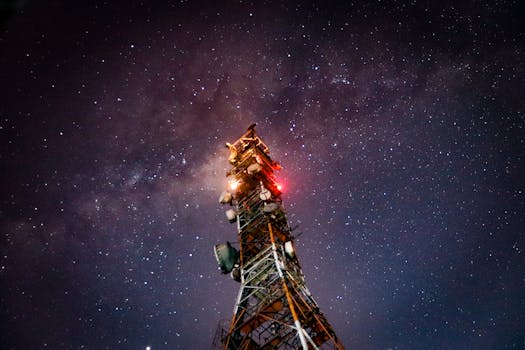
LEO Satellites: Revolutionizing Global Connectivity with Low Earth Orbit Technology
LEO satellites, or Low Earth Orbit satellites, are a type of satellite that operates at an altitude of around 160 to 2,000 kilometers above the Earth’s surface. This relatively low orbit allows LEO satellites to provide faster and more reliable connectivity than traditional satellite systems, which operate at much higher altitudes. In this article, we will explore the benefits and applications of LEO satellites and how they are revolutionizing global connectivity.
LEO satellites have several advantages over traditional satellite systems. One of the main benefits is their lower latency, which is the time it takes for data to travel from the Earth to the satellite and back. Because LEO satellites are closer to the Earth, they have a much lower latency than traditional satellites, which can be as high as 600-800 milliseconds. This makes LEO satellites ideal for applications that require real-time communication, such as video conferencing and online gaming.
Applications of LEO Satellites
LEO satellites have a wide range of applications, from providing internet access to remote and underserved areas to supporting critical communications for emergency responders and military personnel. They can also be used for Earth observation, navigation, and weather forecasting. Additionally, LEO satellites can provide backup connectivity during natural disasters or other outages, ensuring that critical communications remain available.
One of the most significant applications of LEO satellites is providing internet access to remote and underserved areas. Many parts of the world lack access to reliable and affordable internet, which can hinder economic development and social progress. LEO satellites can help bridge this digital divide by providing fast and reliable internet access to these areas, enabling people to access information, communicate with others, and participate in the global economy.
Challenges and Limitations of LEO Satellites
While LEO satellites offer many benefits, they also have some challenges and limitations. One of the main challenges is the need for a large constellation of satellites to provide global coverage. This can be expensive and require significant resources to launch and maintain. Additionally, LEO satellites have a shorter lifespan than traditional satellites, typically ranging from 5-10 years, which means they need to be replaced more frequently.
Another challenge is the risk of interference from other satellites and terrestrial systems. As the number of LEO satellites increases, there is a growing risk of interference, which can impact the performance and reliability of these systems. To mitigate this risk, satellite operators and regulators are working together to develop standards and guidelines for the deployment and operation of LEO satellites.
Future of LEO Satellites
Despite the challenges and limitations, the future of LEO satellites looks promising. Many companies, including SpaceX, Amazon, and OneWeb, are investing heavily in LEO satellite constellations, with plans to launch thousands of satellites in the coming years. These constellations will provide global coverage and enable a wide range of applications, from internet access to Earth observation and navigation.
The development of LEO satellites is also driving innovation in related technologies, such as satellite manufacturing, launch systems, and ground equipment. As the demand for LEO satellites grows, we can expect to see significant advancements in these areas, leading to more efficient, cost-effective, and reliable satellite systems.





